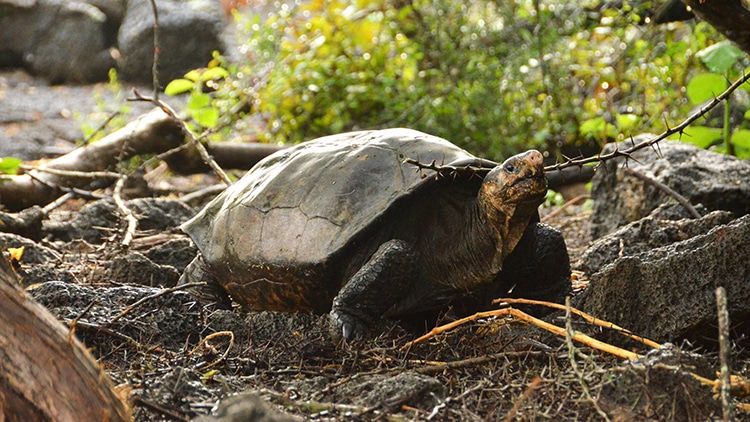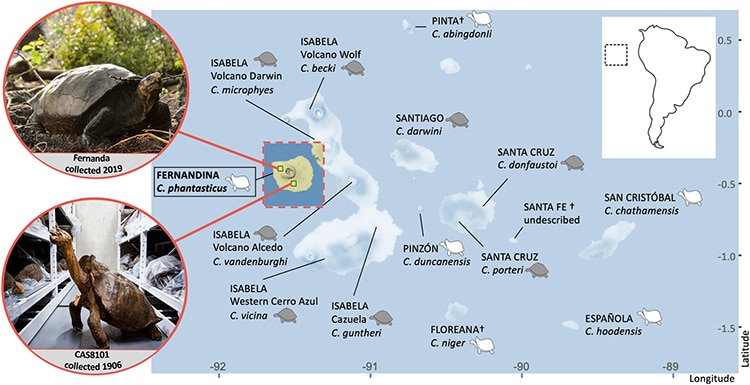Fernanda, the Fernandina giant tortoise, at the Galapagos National Park.
The male critter had roamed Fernandina Island, one of the islands of the gorgeous Galapagos.
However, after a century of tantalizing clues, biologists have shocking news.

Fernanda, the Fernandina giant tortoise, at the Galapagos National Park. (Photo:Galápagos Conservancy)
The species, whose name is Latin for fantastic giant tortoise, isnot extinct.
The tortoise was discovered in 2019, but only recently were her genetics confirmed in writing.
Researchers named her Fernanda.

Map of Galápagos tortoises. (Photo:Wikimedia Commons,CC BY 4.0)
Her DNA was collected and compared to the 1906 specimen.
Much to everyone’s surprise, Fernanda was found to belong to the once-extinct fantastic species.
This exciting news was published inCommunications Biology.
While her species has not been documented in over a hundred years, Fernanda herself is middle-aged.
Her growth may have been stunted by limited food.
Clearly, her species is extremely endangered.
Of the 14 different species of giant Galapagos tortoises, all are vulnerable, endangered, or extinct.
Finding Fernanda is not only a great surprise, but a once-in-a-generation chance to save a species.
Are there more tortoises on Fernandina that can be brought back into captivity to start a breeding program?
Fernanda now lives in the Galapagos National Parks Giant Tortoise Breeding Center on Santa Cruz Island.
Researchers and conservationists hope that further research and exploration may reveal a way to breed the species in captivity.
Fernanda may be as fantastic as her scientific name suggests.
She may be the missing link which preserves an ancient species.
Fernanda, thechelonoidis phantasticusor fantastic giant Galapagos tortoise, is the only known member of her species.
The species was thought to go extinct in 1906.
Map of Galapagos tortoises.